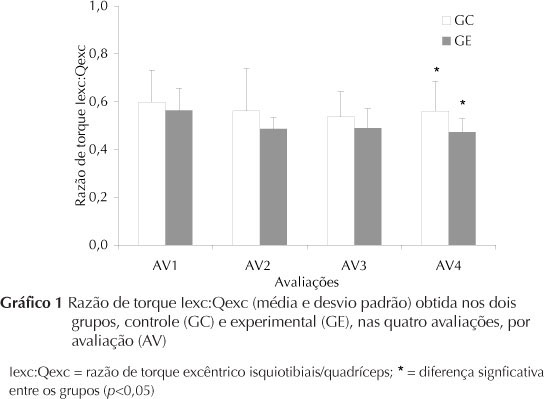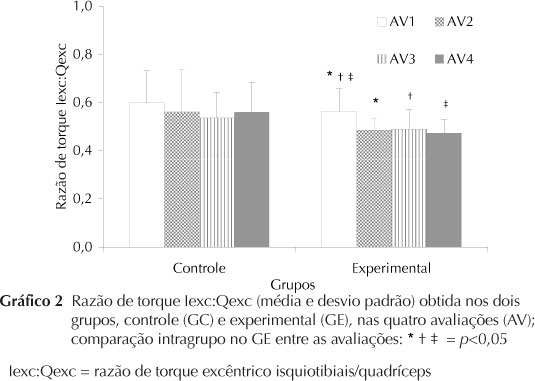Eccentric training produces skeletal muscle adaptations that help preventing muscle injuries, being often used in rehabilitation and physical fitness programs, but little is known of the effects of this training in the balance between knee antagonistic muscles. Torque ratios allow determining such balance. The purpose of this study was to assess the effect of a 12-week eccentric training program on the eccentric torque ratio between hamstring and quadriceps muscles (Hecc:Qecc). Twenty-four healthy male subjects were assigned to either a control group (CG, n=13, aged 27.7±4.6 years) or an experimental group (EG, n=11, aged 28.5±9.5 years). An isokinetic dinamometer was used (angular velocity -60º/s) for both the eccentric training and the assessments, performed every four weeks. Torque ratios measured were statistically compared between groups and intragroups between assessments, with (significance level set at p<0.05. In EG a reduction in torque ratios was found from the initial assessment (AS1) to the other three ones: AS1x AS2, p=0.005; AS1x AS3, p=0.001; and AS1x AS4, p<0.001. At the last evaluation, EG torque ratios were lower than those of CG's (p=0.041). Eccentric training hence changes balance between knee flexor and extensor muscles: a 12-week training program leads to lower Hecc:Qecc ratio and to extensor torque increase, with no significant change in flexor torque, being thus suitable for rehabilitation aimed at strengthening knee extensor muscles.
Exercise movement techniques; Knee joint; Quadriceps muscle; Torque



